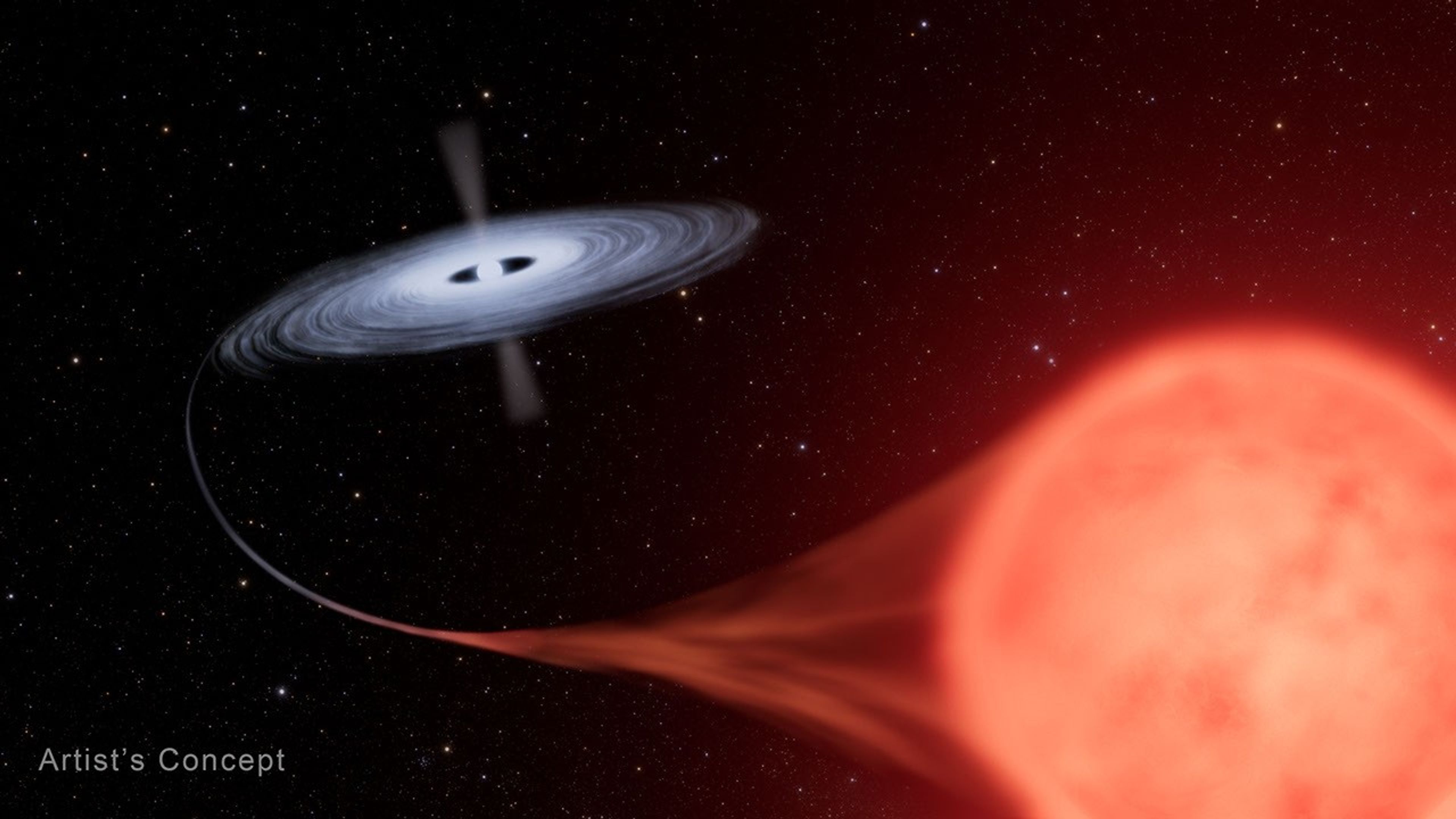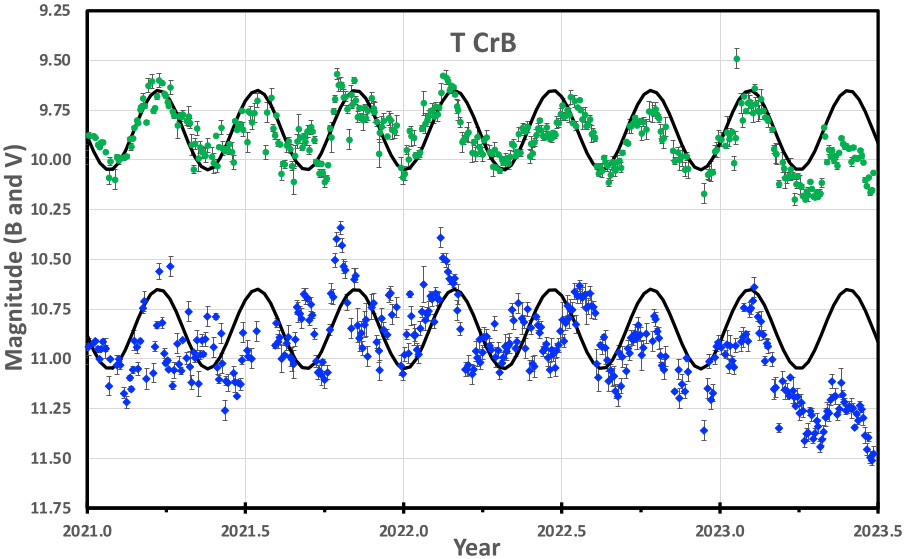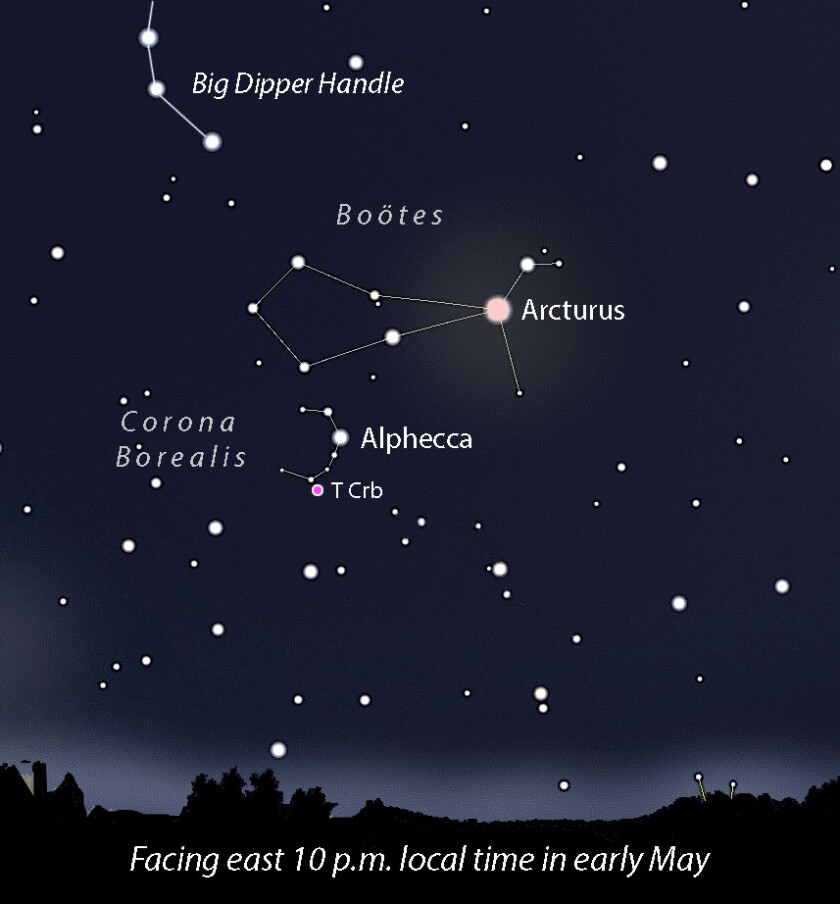
When Jimmy Buffett penned the song “Waiting for the Next Explosion” for his album Beach House on the Moon, he was taking a pretty metaphorical look at life. Our wait for the next explosion of T CrB, aka T Coronae Borealis, is a bit more literal.
You may recall a post on this site from last summer about the impending blast of a white dwarf star in the small constellation Corona Borealis, near the much larger constellation Boötes. The initial predictions were for this past September but, now 7 months later, astronomers are still patiently waiting for this recurring nova to go off once again.
T CrB last experienced a nova in 1946, with another back in 1866 and 1787 before that. This places these novae roughly 80 years apart, which means we are due for one any day now.
What is a nova?
T Coronae Borealis is actually two separate stars, a binary star system. This system consists of one red giant and one white dwarf star. Over time, the red giant sheds its outer layers and some of that material piles up on the surface of the white dwarf. The image below from NASA shows an artists concept of what this may look like.

Once enough material from the red giant piles up on the white dwarf, gravity causes the outer surface of the white dwarf to explode. This creates a nova.
A nova differs from a supernova in that novae are generally reoccurring. Supernovae are also much brighter in comparison and can at times outshine whole galaxies. Betelgeuse will likely be the next visible star to go supernova, and when it does it will likely cast shadows at night and be visible during the day. This nova won’t be nearly that impressive.
How do we know it is coming?
Aside from the previous sightings all roughly 80 years apart, there is one other thing we can track to help predict the upcoming nova: T CrB’s brightness. Prior to the 1946 event, astronomers were closely tracking the system’s brightness in anticipation of any potential changes. What they witnessed was a mysterious dimming of the star system immediately before the white dwarf went nova. This “pre-eruption dip” has no known cause, but is likely due to dust getting in our line of sight to the star system somehow. The graph below shows what they witnessed from 1941-1947. You can see the dip then brilliant spike afterwards.

Any chance of this dip being a fluke (which wasn’t very likely to begin with) went away when another dip was witnessed in 2024. Astronomers B. E. Shaefer of Louisiana State University along with B. Kloppenborg and E. O. Waagen of the American Association of Variable Star Observers (AAVSO) announced this dip last year and initially forecast the next nova in September of 2024, plus or minus a few months. This dip can be seen as the big drop in blue and green wavelengths from the black line representing “normal” below. It is most obvious in the blue wavelength, hence the much bigger drop.

What will we see?
Currently, T CrB is practically invisible to the naked eye shining only around 9th/10th magnitude making it only visible to the sharpest eyes in the darkest of skies. Whenever the star goes Nova, that will change for a bit.
The last time, the star system got as bright as the 2nd magnitude. This puts it on par with Polaris, the North Star, and Mizar, the middle star of the Big Dippers handle. While this won’t be an Earth shattering event to witness, the sudden appearance of a star this bright is still worth checking out, and it won’t last long. At best, the star will only be naked eye visible for a few days, with binoculars being able to easily pick it out for a week or a bit more. From now through early May it is up in the eastern sky plenty high enough to be seen by the time it gets dark. It is then up all night not setting until around 11 AM thanks to its proximity to Polaris.
Corona Borealis isn’t a particularly hard constellation to find, especially with the very bright Arcturus and Big Dipper close by. In fact, just use the middle two stars in the Big Dippers handle to point almost directly towards T CrB.

Exactly when will we see it? Who knows, but it will most likely be soon. We’ll certainly be keeping an eye on it and let you know when it finally does explode.






